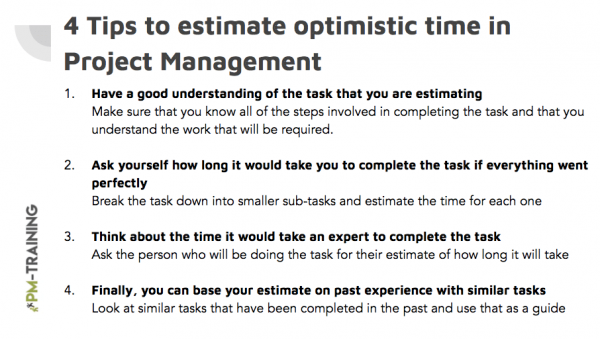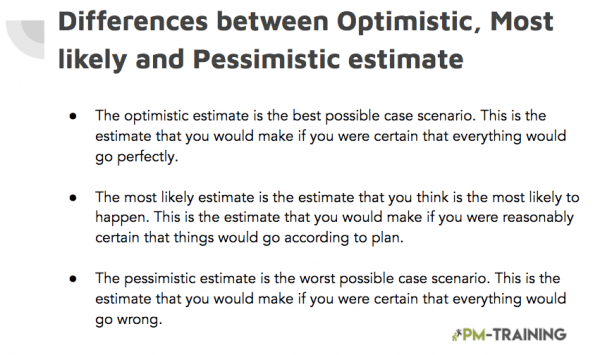In the Pert formula, optimistic time is the minimum amount of time that a task can be completed in. This time is estimated based on the best-case scenario, and it assumes that there are no unforeseen delays or problems. To properly understand what is optimistic we first must know about the PERT Formula.
During the planning phase of the project, you will need to use the PERT or the Program Evaluation Review Technique. This is a formula used to calculate the optimal amount of time needed to complete a project. The formula takes into account the optimistic, most likely, and pessimistic estimates of time for each task in the project.
By taking all of these estimates into account, the PERT formula can provide a more accurate picture of the time needed to complete a project.
Optimistic time estimation can be somewhat tricky, as there is always the possibility that a task will take longer than expected. However, there are a few techniques that can help you come up with a more realistic optimistic time estimate.
Tips to estimate optimistic time in Project Management
In PERT, optimistic time is generally estimated to be one-sixth of the time it would take an expert to complete the task. This estimate is then used to calculate the expected time for the task, which is the average of the optimistic and pessimistic estimates. While the optimistic estimate is usually based on intuition, there are some ways you can make this estimate more realistic.

By using these methods, you can make your optimistic estimate more realistic and accurate. This will in turn help you to better estimate the expected time for the task, which is essential for successful project planning.
Optimistic Time In PERT Formula
The PERT formula is used to calculate the optimistic time, most likely time, and pessimistic time for a task. The PERT formula is:
PERT = (O + (4M) + P) / 6
Where:
O = Optimistic time
M = Most likely time (probabilistic team)
P = Pessimistic time
Differences between the optimistic, most likely, and the pessimistic estimate
Each one of these terms describes a different level of certainty, which is important to know when making decisions.

Knowing the difference between these three estimates is important because it can help you make better decisions. If you are optimistic, you might be
What is Optimistic Time in PERT Formula?
PERT is a popular project management tool that is used to estimate the time required to complete a project. One of the key components of PERT is the estimation of an optimistic time, which is the shortest possible time that a task can be completed.
What are the 3 estimates used in PERT?
When making estimates, it is common to give what is known as an optimistic estimate, a pessimistic estimate, and a most likely estimate. The optimistic estimate is the best-case scenario, the pessimistic estimate is the worst-case scenario, and the most likely estimate is, well, the most likely scenario.
What is the importance of the PERT estimates?
Well, the optimistic estimate gives you a goal to strive for while the pessimistic estimate prepares you for the worst-case scenario (usually, not always), and the most likely estimate is, of course, the most likely outcome.
